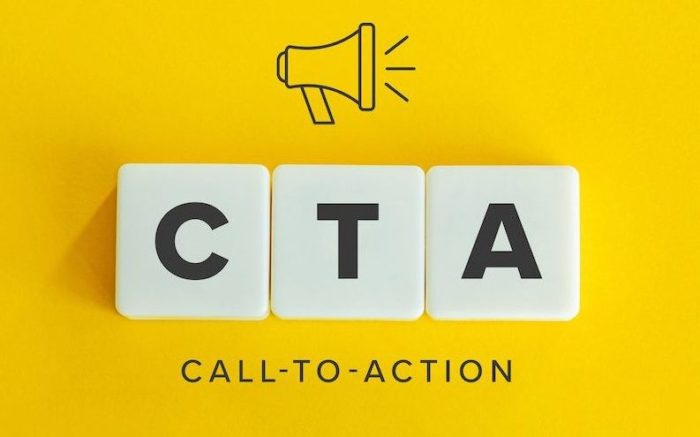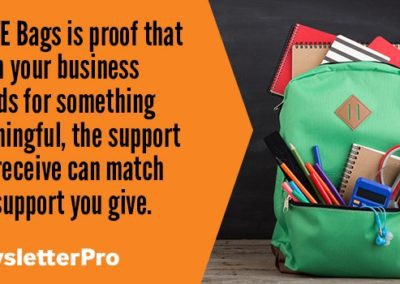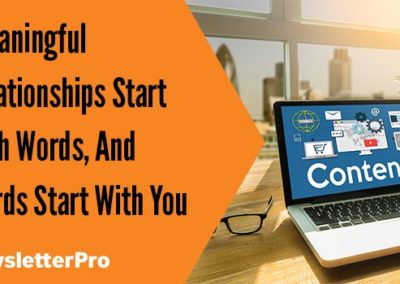In the digital age, content marketing has become a key strategy for businesses.
One tool that often gets overlooked is the humble newsletter.
Newsletters can be a powerful part of your content marketing strategy. They can help you build relationships, nurture leads, and drive sales.
But how do you use newsletters effectively? How do you create content that engages your audience and encourages them to take action?
In this comprehensive guide, we’ll explore how to use newsletters as a content marketing sales strategy.
We’ll delve into the role of newsletters in content marketing, how to understand your audience, and how to craft compelling content.
We’ll also discuss design considerations, calls-to-action, measuring success, and much more.
Whether you’re a content marketer, a business owner, or an entrepreneur, this guide will provide you with actionable insights and best practices.
So, let’s dive in and discover how to leverage the power of newsletters to boost your sales strategy.

The Role of Newsletters in Content Marketing
Newsletters play a crucial role in content marketing. They are a direct line of communication between your business and your audience.
They allow you to share valuable content, updates, and promotions directly to your subscribers’ inboxes. This keeps your brand top-of-mind and encourages ongoing engagement.
Newsletters can also help you build and maintain relationships with your customers. They provide a platform for you to share your brand story, showcase your expertise, and provide value to your audience.
But newsletters aren’t just about sharing content. They can also drive sales by nurturing leads and encouraging conversions.
Here are some ways newsletters can contribute to your content marketing sales strategy:
- Lead Nurturing: Newsletters can help you nurture leads by providing them with valuable content and keeping them engaged with your brand.
- Customer Retention: By providing ongoing value, newsletters can help you retain customers and encourage repeat purchases.
- Brand Awareness: Regular newsletters keep your brand top-of-mind, increasing the likelihood that subscribers will think of you when they’re ready to make a purchase.
- Direct Sales: Newsletters can drive direct sales by promoting products, services, or special offers directly to your audience.
- Traffic Generation: By linking to your website or blog, newsletters can drive traffic and increase engagement with your other content.
By understanding the role of newsletters in content marketing, you can leverage them effectively to boost your sales strategy.
Defining Your Newsletter Marketing Goals
Before you start crafting your newsletters, it’s important to define your marketing goals. These goals will guide your content creation and help you measure success.
Perhaps you want to increase brand awareness, drive traffic to your website, or boost product sales. Maybe your goal is to nurture leads, retain existing customers, or build a community around your brand. Whatever your goals, make sure they are clear, measurable, and aligned with your overall business objectives.
Remember, your goals may evolve over time. As you learn more about your audience and refine your newsletter strategy, don’t be afraid to adjust your goals accordingly. This flexibility will ensure your newsletters remain effective and continue to drive your content marketing sales strategy forward.
Understanding Your Audience for Effective Newsletter Marketing
To create newsletters that resonate with your audience, you need to understand who they are. This involves more than just knowing their demographic information. You need to understand their needs, interests, and behaviors.
Start by analyzing your existing customer data. Look for patterns and trends that can help you understand your audience better. This could include their purchasing behavior, the type of content they engage with, and the channels they use to interact with your brand.
Once you have a clear picture of your audience, you can create content that speaks directly to them. This will make your newsletters more engaging and effective, ultimately driving your content marketing sales strategy.
Crafting Audience Personas
Creating audience personas can be a helpful way to understand your audience. These are fictional representations of your ideal customers, based on real data about your existing customers.
Each persona should include demographic information, as well as details about their interests, behaviors, and challenges. This will help you create content that is tailored to their needs and interests, making your newsletters more engaging and effective.
Leveraging Analytics to Inform Content
Analytics can provide valuable insights into what your audience is interested in. By analyzing the performance of your past content, you can identify what resonates with your audience.
Look at metrics like open rates, click-through rates, and conversion rates. This will help you understand what type of content your audience finds valuable, allowing you to create more of it in your newsletters.
Engaging with Your Audience for Insights
Don’t underestimate the value of direct engagement with your audience. This could involve conducting surveys, asking for feedback, or simply having conversations with your customers.
These interactions can provide valuable insights into what your audience wants and needs. Use this information to inform your newsletter content, ensuring it is relevant and valuable to your audience.
Crafting Compelling Content for Your Newsletters
Creating compelling content for your newsletters is crucial. It’s what grabs your audience’s attention and keeps them engaged. But what makes content compelling?
Firstly, it needs to be relevant. Your audience should find value in every newsletter you send. This could be in the form of useful tips, industry insights, or exclusive offers.
Secondly, it needs to be engaging. Your content should encourage your audience to interact with your brand, whether that’s by clicking a link, sharing your content, or making a purchase.
Finally, it needs to be well-written. Good writing is clear, concise, and easy to understand. It’s also free of errors, which can undermine your credibility.
Writing Engaging Subject Lines
The subject line is the first thing your audience sees when they receive your newsletter. It’s your chance to grab their attention and entice them to open your email.
A good subject line is short, clear, and compelling. It should give your audience a reason to open your email. This could be a promise of valuable content, an exclusive offer, or a compelling question.
Personalization and Segmentation Strategies
Personalization and segmentation are powerful tools in newsletter marketing. They allow you to tailor your content to the needs and interests of different segments of your audience.
For example, you could segment your audience based on their purchase history, and send them personalized product recommendations. Or you could segment them based on their location, and send them content that’s relevant to their local area.
The Power of Storytelling in Newsletters
Storytelling is a powerful tool in content marketing. It allows you to connect with your audience on an emotional level, making your brand more memorable.
In your newsletters, you could tell stories about your brand, your customers, or your industry. These stories can help to build a strong relationship with your audience, ultimately driving sales.
Designing Newsletters for Maximum Impact
The design of your newsletters plays a crucial role in their effectiveness. A well-designed newsletter is visually appealing, easy to read, and aligns with your brand’s visual identity.
The layout of your newsletter should be clean and uncluttered. This makes it easier for your audience to focus on your content. Use headings and subheadings to break up your text and make it more digestible.
Your choice of colors and fonts should reflect your brand’s visual identity. This helps to create a consistent experience for your audience across all your marketing channels.
Finally, your design should include clear calls-to-action. These guide your audience towards the action you want them to take, whether that’s clicking a link, making a purchase, or sharing your content.
Mobile-Friendly and Responsive Design
With more and more people accessing their emails on mobile devices, it’s crucial that your newsletters are mobile-friendly. This means they should look good and function well on screens of all sizes.
A responsive design automatically adjusts to the screen size of the device it’s viewed on. This ensures a seamless experience for your audience, regardless of how they access your newsletter.
Visual Appeal: Images and Videos
Images and videos can greatly enhance the visual appeal of your newsletters. They can break up your text, making your content more engaging and easier to digest.
However, it’s important to use visuals wisely. They should support your content, not distract from it. And remember to include alt text for those who can’t see or load your images.

Calls-to-Action: Driving Conversions Through Newsletters
A call-to-action (CTA) is a crucial element of any newsletter. It’s the prompt that encourages your audience to take a specific action, such as making a purchase, signing up for a webinar, or downloading a resource.
Your CTA should be clear and compelling. It should tell your audience exactly what you want them to do and why they should do it. For example, instead of a generic “Click here”, you could use “Download our free guide to improving your SEO”.
Remember, the goal of your newsletter is not just to inform, but also to drive conversions. A well-crafted CTA can significantly increase your conversion rate, turning your newsletter subscribers into customers.
Measuring Success: Newsletter Metrics to Track
To understand the effectiveness of your newsletters, you need to track certain metrics. These metrics provide insights into how your audience interacts with your newsletters and what aspects need improvement.
Key metrics to track include open rate, click-through rate, conversion rate, and unsubscribe rate. Open rate tells you how many people are opening your newsletters. Click-through rate shows how many people are clicking on the links in your newsletters.
Conversion rate indicates how many people are taking the desired action after clicking on your newsletter links. Unsubscribe rate, on the other hand, shows how many people are choosing to stop receiving your newsletters. High unsubscribe rates may indicate that your content is not resonating with your audience.
A/B Testing and Refining Your Strategy
A/B testing is a powerful tool for refining your newsletter strategy. It involves sending two versions of your newsletter to different segments of your audience to see which performs better.
For example, you could test different subject lines, content formats, or CTAs. The version that results in higher open rates, click-through rates, or conversions is the one you should use moving forward. Remember, the goal is to continuously improve your newsletters based on data-driven insights.
Growing and Maintaining Your Subscriber List
Growing your subscriber list is crucial for the success of your newsletter marketing. One effective way to do this is by offering valuable content that encourages people to sign up. You can also promote your newsletter on your website, social media channels, and other marketing materials.
Maintaining your subscriber list is equally important. Regularly clean your list to remove inactive subscribers. This helps improve your open and click-through rates, as you’re only sending newsletters to people who are genuinely interested.
GDPR Compliance and Subscriber Privacy
In today’s digital age, respecting subscriber privacy is paramount. This is especially true in light of regulations like the General Data Protection Regulation (GDPR) in the European Union.
Ensure your newsletter sign-up process is GDPR-compliant. This means getting explicit consent from subscribers before sending them newsletters. Also, provide an easy way for subscribers to opt-out of your newsletters. Respecting subscriber privacy not only keeps you on the right side of the law, but also builds trust with your audience.
Integrating Newsletters with Your Overall Marketing Strategy
Newsletters should not exist in isolation. They should be an integral part of your overall content marketing strategy. This means aligning your newsletter content with your broader marketing goals and initiatives.
For instance, if you’re launching a new product, use your newsletter to build anticipation among your subscribers. If you’re hosting a webinar, use your newsletter to invite your subscribers. By integrating your newsletters with your overall marketing strategy, you can create a cohesive brand experience for your audience.
Remember, consistency is key. Ensure your newsletters reflect your brand voice and aesthetics. This helps reinforce your brand identity and makes your newsletters instantly recognizable to your subscribers.
Conclusion: The Future of Newsletter Marketing
As we look to the future, newsletters will continue to play a pivotal role in content marketing. With advancements in personalization, automation, and analytics, newsletters will become even more targeted and effective in driving sales.
In conclusion, using newsletters as a content marketing sales strategy is not just about selling. It’s about building relationships, providing value, and creating a community around your brand. By understanding your audience, crafting compelling content, and continuously refining your strategy, you can leverage the power of newsletters to drive your business growth.






